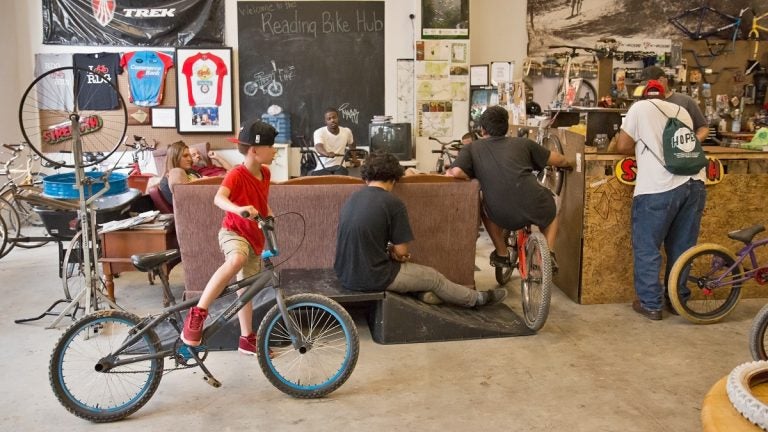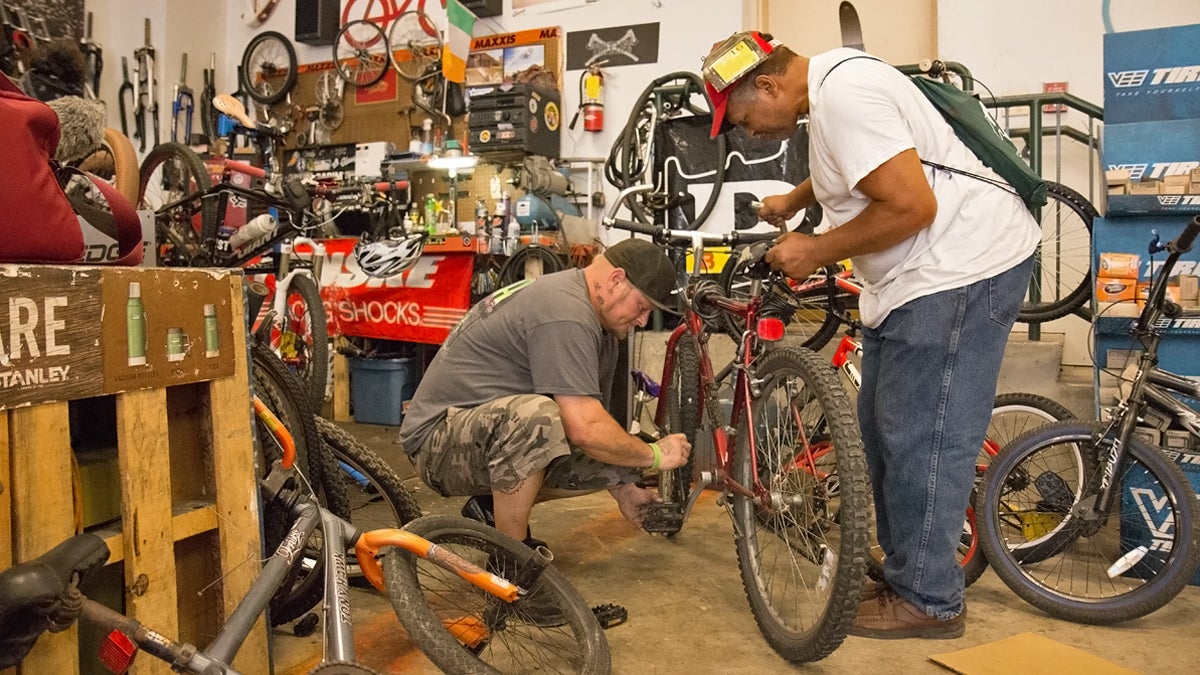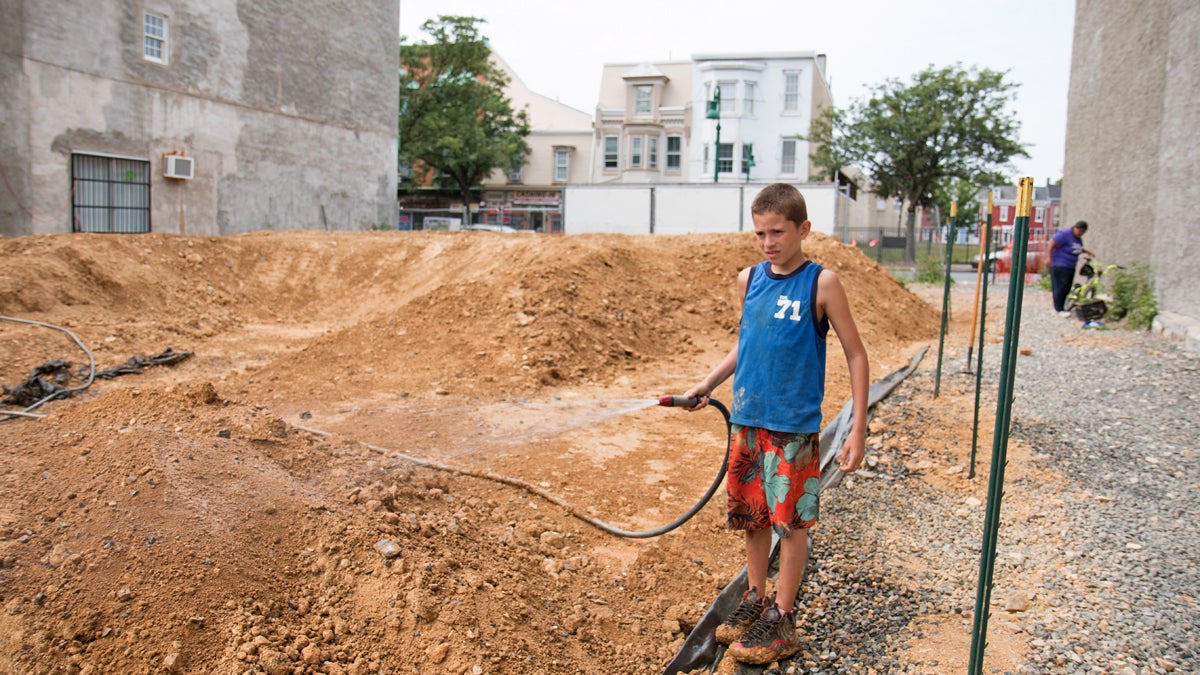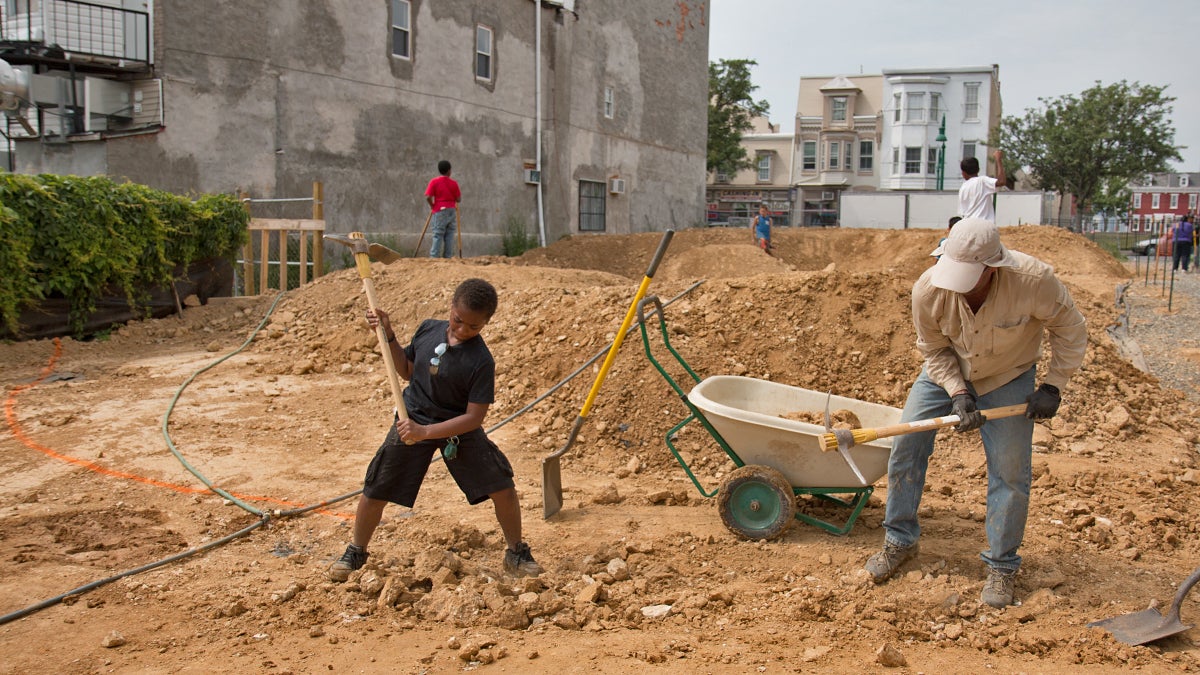In Reading, Pennsylvania, using bicycling as a revitalization tool
Listen
Every day
But not in the way you might expect.
On a Wednesday evening, about 30 people — mostly kids — sit poised on their bikes on a street in downtown Reading.
It’s 6 p.m., and they’re about to head out for their weekly ride through the city.
A man in a white t-shirt goes over some safety rules.
“Be aware of your surroundings,” he says. “No stupid stunts, none of that. And please stay together.”
With that, they take off, to the tunes of Marc Anthony’s “Vivir Mi Vida,” playing from speakers on the back of one guy’s bike.
Around the city, people sit on their stoops and wave. A driver honks his horn and gives the bikers a thumbs up.
Every week, these rides leave from the Reading Bike Hub, a bike shop that opened two years ago and is run by volunteers. It’s part of a push by Redesign Reading, a nonprofit group trying to revitalize the city using something that’s a necessity for a lot of residents: biking.
“Reading’s poor, and a lot of the people who live here are poor, so riding a bike is how they get from place to place,” said Dani Motze, special assistant to the executive director at the nonprofit. “It’s how they get to work. It’s how they get their groceries. It’s how kids get to school.”
The bike hub fills a need for affordable bikes and parts, Motze says. It also occupies a formerly vacant building in a city battling blight. But maybe more than anything, it’s a refuge for kids in an area where there’s a lot of gang violence and drug crime.
A place to go
Every day, dozens of kids come to the shop. They play video games, work on their bikes, and just hang out.
The bike hub’s manager, Jason Orth, grew up in Reading, and he welcomes them. “I’d rather have ’em here than hanging out in the street, he says, as he’s fixing a bike.

Reading Bike Hub manager Jason Orth fixes a bike for a customer. (Marielle Segarra/WHYY)
Orth teaches the kids how to build bikes. He also lets them do chores, like sweeping the floor, in exchange for bike parts and bike shop swag.
“We just do it so they know that nothing in life is free,” he says. “You gotta work for everything and anything you want.”
The kids seem to take pride in what they earn.
A few blocks away, Carmelo Perez, a 10 year old, hoses down Reading’s new bicycle track, another project by Redesign Reading. It’s not finished yet, so it still looks like a big mound of dirt.

Carmelo Perez, 10, helps to build Reading’s new bicycle track. (Marielle Segarra/WHYY)
Perez pulls a bike light out of his pocket. “You put it on your bike, on your seat, and then when it’s dark, you press that, and look, you see, it’s glowing?”
He earned the bike light by volunteering at the shop. And now, he has his sights set on a Reading Bike Hub t-shirt. It has a drawing of a bike on it, and it comes in red, blue, black, and other colors.
I ask him how many hours he’ll have to work to earn the t-shirt.
“We can’t get it in hours,” he says. “We get it … probably not even in days. Well, it’s a miracle if we get it in days. It’s going to take two or three weeks to earn a shirt.”
He says that once he does, he’s going to write his name on the tag in permanent marker — so everybody will know it’s his.
Community-centered revitalization
A lot of revitalization efforts are based on the premise that a city should be attracting outsiders, especially when it comes to biking.
“Other cities have used biking because biking is cool and hip,” says Brian Kelly, the executive director of Redesign Reading.
Biking is also popular among a group that cities have been courting for a long time — young, affluent people with disposable income. The idea is that they’ll pay a lot in taxes and spend money at a city’s restaurants and businesses.
“There’s nothing wrong with that,” Kelly says. “We appeal to all those different groups. But oftentimes the group that gets left out are the people that bike who don’t have cars and don’t have the option of other forms of transportation.”

Volunteers break apart the dirt that will form Reading’s new bicycle track. (Marielle Segarra/WHYY)
The bike hub is about making the city work for that group of people — especially those who already live in Reading. And that means making it safe.
In Reading, there are no bike lanes, signs, or street markings, even though the larger region has cycling amenities, like extensive mountain biking trails.
That’s about to change. Redesign Reading was recently awarded a grant to paint “sharrows” — white arrows that tell bikers where to go — on the street in a section of the city.
It’s a small start. But ironically, that and the other changes the nonprofit is pushing for will probably appeal to a lot of bikers, whether they live in the city or not.
Correction 9/1/16: A previous version of this story misspelled Dani Motze’s last name.
WHYY is your source for fact-based, in-depth journalism and information. As a nonprofit organization, we rely on financial support from readers like you. Please give today.


